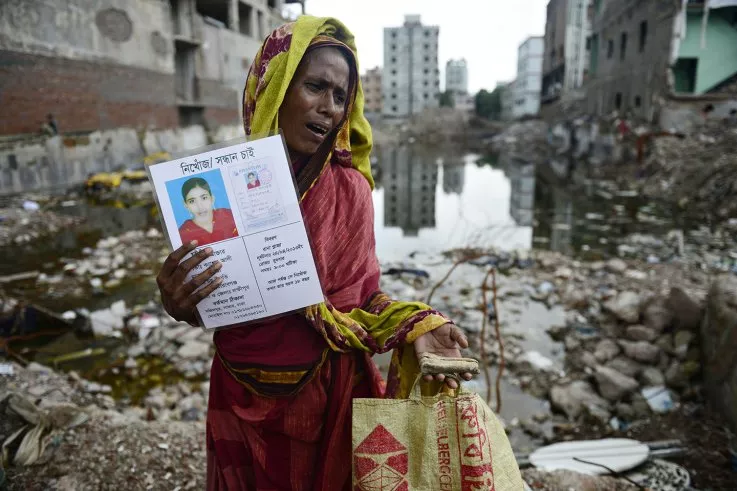This all apparently compared well to the washhouses of Xintang, the town in Guangdong Province, China, that claims to be the "jeans capital of the world." Each year, 200,000 garment workers in Xintang's 3,000 factories and workshops produce 300 million pairs of jeans—800,000 pairs a day. The local water treatment plant closed years ago, leaving factories to dump dye waste directly into the East River, a tributary of the Pearl River. It turned opaque; aquatic life could no longer survive. Greenpeace has reported that the riverbed contains high levels of lead, copper and cadmium. Xintang's streets are dusted blue. And many garment workers have reportedly suffered from skin rashes, infertility and lung infections.
這一切與號稱“世界牛仔褲之都”的中國廣東省新塘鎮(zhèn)的洗衣房相比,簡直是天壤之別。新塘有3000多家工廠和作坊,每年有20萬服裝工人生產3億條牛仔褲,每天有80萬條。當地的水處理廠幾年前關閉了,留下工廠直接將染料廢料傾倒到珠江的一條支流——珠江。結果難以理解;水生生物無法生存。綠色和平組織報告稱,該河床含有高濃度的鉛、銅和鎘。新塘的街道一片蔚藍。據報道,許多制衣工人患有皮疹、不孕癥和肺部感染。

Eco-Friendly Finishing?
環(huán)保完成了嗎?
Distressed, whiskered jeans continue to drive the global market and have been the cause of ecological and health calamity. What could be done about finishing? Surely, in our world of rapid technological advancement, there must be a way to banish the horrors I saw in the Ho Chi Minh sweatshop.
令人苦惱的是,破洞拉線牛仔褲繼續(xù)推動著全球市場,并已成為生態(tài)和健康災難的根源。如何才能完成呢?當然,在我們這個科技飛速發(fā)展的世界,肯定有辦法消除我在胡志明市血汗工廠看到的恐怖。
Denim industry consultants José Vidal and his nephew Enrique Silla, based in Valencia, Spain, set out to develop a cleaner, safer three-step process called Jeanologia: lasers, which replace sandblasting, hand-sanding, and the bleaching chemical potassium permanganate (PP); ozone, which fades fabrics without chemicals; and e-Flow, a washing system that uses microscopic "nanobubbles" and cuts water usage by 90 percent.
牛仔行業(yè)顧問何塞•維達爾和他的外甥恩里克•西拉在西班牙瓦倫西亞工作,他們打算開發(fā)一種更清潔、更安全的三步工藝,名為Jeanologia:取代噴砂、手工砂光和漂白化學劑高錳酸鉀的激光;臭氧會使沒有化學物質的織物褪色;e-Flow是一種使用微型“納米氣泡”的洗滌系統,它可以將用水量減少90%。
Traditionally, finishing a pair of jeans requires an average of 18 gallons of water, 1.5 kilowatts of energy and 5 ounces of chemicals. In total, that equals an astonishing 92 million gallons of water, 7.5 billion kilowatts of energy (enough to power the city of Munich for a year) and 750,000 tons of chemicals each year.
傳統上,完成一條牛仔褲平均需要18加侖的水,1.5千瓦的能源和5盎司的化學品。總的來說,這相當于驚人的9200萬加侖的水,75億千瓦的能源(足以為慕尼黑市提供一年的電力)和每年75萬噸的化學物質。
The Jeanologia system can decrease energy consumption by 33 percent, chemicals by 67 percent, and if implemented most efficiently, water usage by 71 percent—or, as the company proudly boasts, to one glass of water per pair of jeans.
Jeanologia系統可以減少33%的能源消耗,減少67%的化學物質消耗,如果實施得最有效,可以減少71%的用水量——或者,正如該公司自豪地宣稱的那樣,每條牛仔褲只消耗一杯水。
譯文由可可原創(chuàng),僅供學習交流使用,未經許可請勿轉載。












